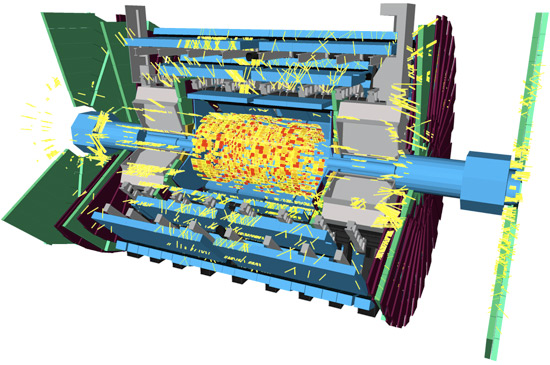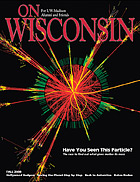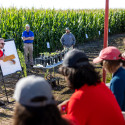World’s biggest particle accelerator begins operation
After more than 15 years of planning and preparation, the Large Hadron Collider (LHC), the world’s most powerful particle accelerator, started operating this morning (Sept. 10).
Read a feature story published in On Wisconsin about UW–Madison’s involvement in the Large Hadron Collider.
At about 2:30 a.m. CDT, a beam of accelerated protons entered the LHC’s 17-mile underground tunnel and successfully completed a full lap less than an hour later, passing through each of the particle detectors spaced along the tunnel. This first circulating beam is a critical step to show that the accelerator is working properly.
Located near Geneva, Switzerland, at the European Organization for Nuclear Research, or CERN, the LHC is a collaboration of thousands of scientists and engineers from around the world. UW–Madison is one of the few institutions that have made major contributions to both of the main particle detectors, called ATLAS and CMS.
“This event is the start of our journey towards a new understanding of the universe, as the beams are sent all the way around their 17-mile superconducting tunnel,” says UW–Madison physics professor Wesley Smith, who is part of the senior management team for the CMS experiment. “Once they can be sustained in the tunnel, raised to higher energy, and then collided, we will draw back the curtain on a new era in science.”

An image from the first beam event seen in ATLAS.
Once running at full capacity, the accelerator will smash two beams of protons together at nearly the speed of light in search of exotic atomic particles and other unknown phenomena that scientists say will help explain unsolved questions about the nature of matter and the physical universe.
“We hope to find particles that have never been observed before,” says Sau Lan Wu, a UW–Madison physics professor who leads a large team of researchers working on the ATLAS experiment. “Things like supersymmetric particles or the Higgs boson — our theories tell us that these particles could exist, and by finding them we will be able to eliminate the theories that do not describe our universe in favor of those that do.”
At full power, the LHC will reach energy levels seven times higher than any achieved in previous experiments. Such energy levels will offer physicists their first glimpses into a new realm of higher energy particles and phenomena, which may help explain the origin of mass, the nature of the elusive dark matter that fills most of the universe, and even the possibility of extra dimensions of space.
“These questions are among the most interesting questions in science today,” Smith says. “We are excited to have this facility that may answer some of them.”
Once stable beams are circulating in both clockwise and counter-clockwise directions, the machine will be ready for its first collisions and the initiation of its physics research program. These first particle collisions are expected to take place within the next two months.





